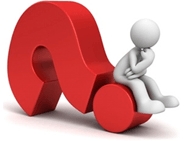Economy

Steel Execs Expect No Price Correction
Written by Tim Triplett
May 24, 2018
What are the potential long-term implications of the Trump administration steel tariffs, in particular their effects on rerollers in the United States? Steel Market Update canvassed steel executives this week for their views on current market conditions, and the impact of the tariffs on pricing and availability clearly remains a source of concern.
“I buy a good amount of 1050 material from NLMK. I don’t think enough is being said about the importance of rerollers,” commented one Midwestern OEM. “If you take their tons out of the market, what effect it will have?” A few mills, especially on the West Coast, depend on imports of slabs from offshore. The outcome of the tariff exclusion process with the Commerce Department is of critical importance to them.
Tariffs mean higher prices. “We may be able to pass on the material price increases initially. But the longer this continues, the greater the possibility our customers will begin buying the finished product we supply from overseas. The fact is, we’ve seen this movie before with the Bush tariffs. Is history repeating itself?” he asked.
One service center executive from the Midwest said he expects plate prices to continue rising. “I think as long as lead times stay over eight weeks, the mills will continue to look for opportunities to move the price.” He expects availability of plate to be tight in the third quarter. “The planned outages at three mills and issues at two others in April are having an effect on third-quarter availability. In my opinion, Q3 is done,” he said.
“I’m a firm believer we will not see a correction in pricing,” agreed a flat roll distributor in the Midwest. “Lead times are still long, supply is tight and there are no ‘good’ foreign offers. I think we stay flat to slightly up in the coming months.”
One service center and manufacturer in the South, who does business with Mexico, also sees steel prices inching higher. “The NAFTA negotiations are not going well. NAFTA alone will be a significant catalyst to move prices higher if a deal is not reached. We may see $1,000 per ton HR. Who knows?”
Most in the industry are watching closely to see how the tariff exclusion process plays out. It appears the only way a country will be granted an exclusion from the 25 percent tariff is if it agrees to a quota on its steel exports to the United States, noted one building products manufacturer in the East. “So, imports will not go away. Supply will either be limited or the price will be up 25 percent.” Both scenarios support higher prices.
Some executives expressed a reluctance to place orders for foreign material. “I’m sure everyone else is like us and nervous about placing orders for steel that won’t arrive until October in light of all of the uncertainty,” said the building products executive. “While we have not seen signs that steel prices will crash, no one wants to be bringing in significant quantities of steel at high pricing in the event prices go down.”
Others see limited risk in placing foreign orders, with steel supplies so tight in the U.S. “Manufacturers need steel. With the domestic mills not producing enough, there is not much risk,” said one source. “As long as the tariffs are factored in and we aren’t buying from countries with complicated quotas, we’ll still buy foreign,” commented another, adding, “Enforcing quotas on the EU as a whole seems challenging.”

Tim Triplett
Read more from Tim TriplettLatest in Economy

Supply chains, end-users brace for impact from tariffs
Supply chains are working through what the tariffs mean for them

ISM: Manufacturing expansion loses steam after two months of growth
US manufacturing activity slowed in March after two straight months of expansion, according to supply executives contributing to the Institute for Supply Management (ISM)’s latest report.

Chicago Business Barometer rose to 16-month high in March
The Chicago Business Barometer increased for the third-consecutive month in March. Despite this, it still reflects contracting business conditions, as it has since December 2023.

Durable goods orders rise again in February
Transportation equipment led the increase, rising 1.5% to $98.3 billion.

Consumer confidence falls for fourth consecutive month
People remain concerned about inflation, trade policies, and tariffs.
